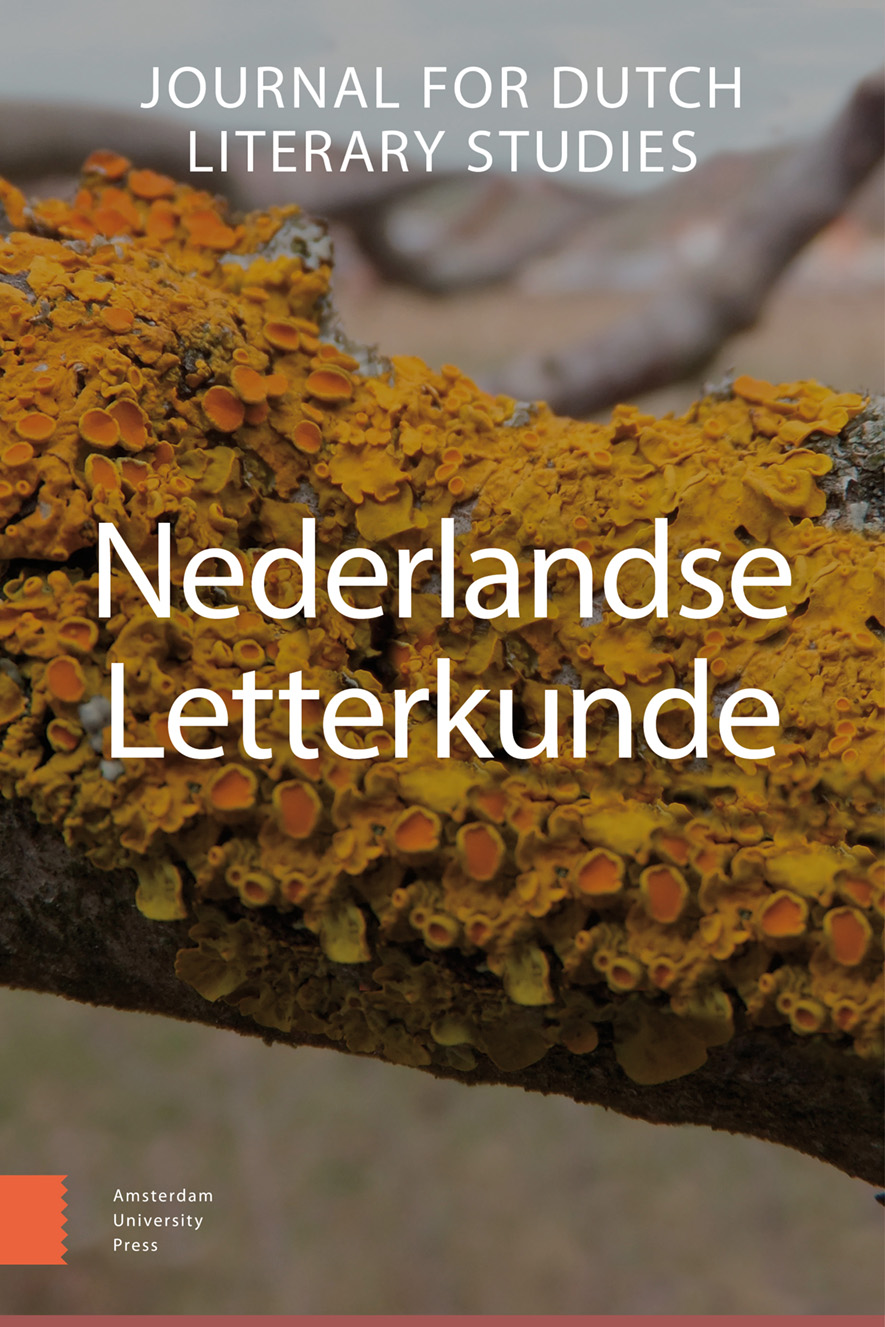- Home
- A-Z Publicaties
- Nederlandse Letterkunde
- Previous Issues
- Volume 14, Issue 1, 2009
Nederlandse Letterkunde - Volume 14, Issue 1, 2009
Volume 14, Issue 1, 2009
-
-
De plaats van tekstanalyse in een institutioneel-poëticale benadering
Meer MinderDoor Gillis J. DorleijnIn Netherlandic Studies, the so-called institutional approach of literature and close-reading of (literary) texts generally are considered to belong to different paradigms. This article explores the way the analysis of texts can be used in institutional-oriented research. After a brief survey of the institutional framework, mainly based on the work of Gisèle Sapiro and the outcomes of the research program ‘The Impact of Conceptions of Literature in the Literary Field’, in which developments on the bookmarket are considered to be elementary for the study of literary history, guidelines are formulated for the applicability of textual analysis to the study of institutions and literary history. To this end, a distinction is made between analysis of non-literary texts (essays, criticism, manifests and the like) and analysis of literary texts, while issues like the acquirement of symbolic capital and (self-)positioning (posture) including all kinds of discursive and esthetical options made by the author are put forward as possible points of relevance to a student of literary history.
-
-
-
Werken aan de toekomst - De historische roman van onze tijd
Meer MinderDoor Bart VervaeckThis article deals with the recent surge of encyclopaedic historical novels in Dutch literature. A first characteristic of these novels is that they install an identification between the I-narrator and the history he or she narrates. This identification does not take on the traditional form of the typical character embodying the historical average, nor that of the hopeful Michelet-like historian who acts as a prophet for his people. Rather, the I-figure is linked with history because they both follow the same exceptional, a-typical and apocalyptic logic, exemplified in viruses or nuclear fission. A second characteristic of these novels concerns the alterity and multiplicity of the I-character and history. Identity is revealed as a set of historical stories that penetrate one another. History turns out to be a multilayered image of various periods interpenetrating each other. On this basis, the article proposes a typology of historical novels based on the amount of historical layers: the one-dimensional novel corresponds with Ankersmit’s objective historical experience (the past is experienced as past); the two-dimensional novel corresponds with his subjective historical experience (the past is experienced from the viewpoint of the present); and the three-dimensional novels discussed in the article correspond with Ankersmit’s sublime historical experience (the distinction between the past and the present is erased). This leads to a short discussion of the ‘historicity regime’ (François Hartog) involved in the sublime historical novel.
-
-
-
Cui dono lepidum novum libellum? - Van editiewetenschap naar traditie-wetenschap: Huygens’ Ooghen-troost door een nieuwe bril
Meer MinderAuteurs: Jürgen Pieters & Christophe Van der VorstThis article takes as its starting point Jerome McGann’s assertion that electronic presentations of historical texts may enable us to understand better the historical specificity of the composition of these texts. Our case in point is Constantijn Huygens’ Ooghen-troost, an electronic edition of which is currently being prepared by one the authors of this contribution. The article serves as the theoretical underpinnings of the editorial project. It hopes to make clear by means of two concrete passages in Huygens’ poem in which way McGann’s text-theory can shed new light on the build-up of the Ooghen-troost and on the poem’s interpellation of present-day readers.
-
Most Read This Month


